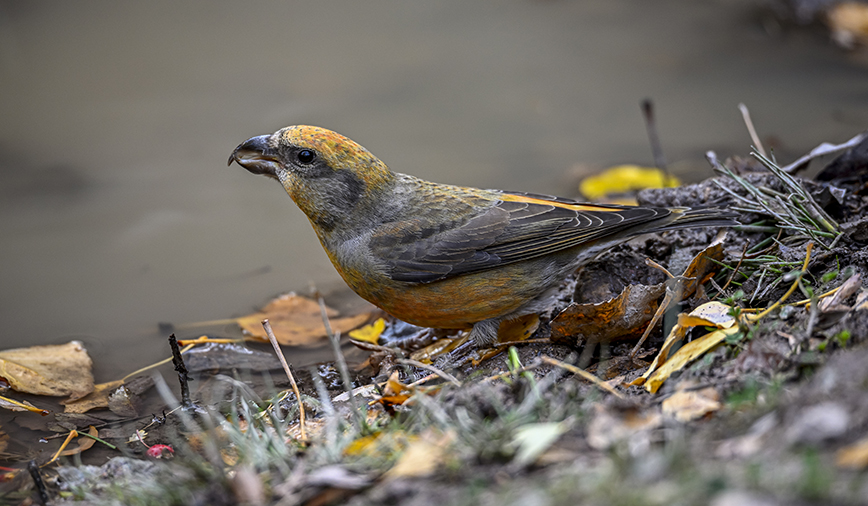Pam’s Perspective
From the…
Pam Otto is the Manager of Natural Programs and Interpretive Services for the St. Charles Park District
March 15, 2013
Any handyman will tell you, having the right tools will make a job go a heck of a lot easier.
Birds, I’ll bet, would say the same thing.
A hawk’s beak is wonderfully adapted to eating meat; a hummingbird’s long, slender bill is exactly what’s needed for sipping nectar—and plucking tiny insects. Finches are primarily seedeaters, as indicated by their heavy, crunching-style beaks.
And then there are crossbills.
At first glance, these birds would appear to be adapted only to starving themselves. Their bills literally cross, as if malformed. But this apparent disadvantage, it turns out, is exactly what the species (in North America, there are two and maybe more) need to survive.
Crossbills are arboreal finches, closely related to redpolls, that make their homes in conifers—evergreens like spruce, pine and fir. The birds not only nest in these trees, but also nosh there, plucking seeds from cones with reckless abandon.
Now, I don’t know about you, but I’ve tried on numerous occasions to extract seeds from the cones of spruce, pine and fir. It’s a tedious process, poking inside those tiny crevices between the cone’s scales.
Success, I’ve found, is not always guaranteed.
Clumsy fingers most certainly are not the right tool for this delicate job. But the crossbills’ crossed bills are perfect.
Because they don’t meet in a point the way conventional bird mandibles do, the two halves of the crossbill’s bill work like pry bars to help the bird gain access to the seeds. Pushing its slightly opened bill in underneath the scale of a cone, the bird then bites down, causing the distance between the bill tips to widen. This action pushes the scale away from the cone and lets the bird’s nimble tongue slip out and snag a seed, which is readily munched.
People who live in areas where crossbills are common say they often hear the birds before seeing them because of all the crunching going on.
So tied are crossbills to their food sources that they will forego returning to a breeding territory each year, in favor of reproducing wherever they find food—cones—most plentiful. This tendency also means that breeding can occur year round, whenever a female finds food in sufficient quantities to support egg production and the raising of young.
Since conifers are northern species, so too are crossbills. Usually. But when winter comes, anything goes. And this year some crossbills decided to leave their coniferous forests and visit us “southerners.”
The other day I got a call from Margaret Siessenbuettel, who lives west of Wasco and is an avid bird feeder. She’s also an astute birdfeeder watcher, and noticed some beautiful yet odd birds at her thistle feeder.
Sure enough, the birds she suspected were crossbills were indeed so. White-winged crossbills, Loxia leucoptera, to be exact.
Sexually dimorphic, the males sport a pinkish-red plumage with dark wings and white wingbars. Females are more of a yellowish gray, with less contrast on their wings. Margaret’s feeder was visited by both genders.
I suppose I should add that Margaret’s yard also hosts a good number of conifers. So in addition to the seeds at the feeder the birds might also have been attracted by the trees’ cones, as well as the shelter their evergreen needles provide.
With Illinois being quite a distance from the crossbills’ typical range, it’s hard to say how long the birds will be in this area. But if you’ve got a yard like Margaret Siessenbuettel’s, one that’s basically a bed and breakfast for crossbills, they just may decide to pay you a visit before heading back north.
Keep your eyes open. And your fingers, well, crossed.

